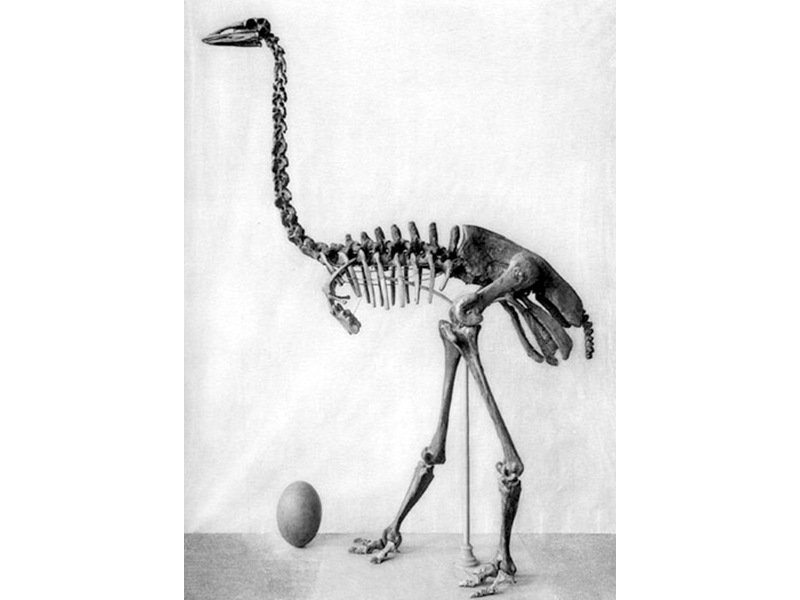Thousands of years ago, humans lived alongside behemoths such as giant lemurs, dwarf hippos, giant tortoises and the world’s largest bird, the elephant bird, on the island of Madagascar. These species have long been extinct, leaving scientists to figure out if climate change or human interference are to blame for their disappearance. A new study reports that although droughts created harsher environments for the animals to survive in, “humans were the straw that broke the elephant bird’s back,” reports Elizabeth Pennisi for Science.
Fossils reveal that the giant creatures went extinct around 1,500 years ago, but, until now, the reason why has been unclear. A team led by Hanying Li, a post-doctoral scholar at Xi’an Jiaotong University in China, traveled to Rodrigues—a small, remote island east of Madagascar—to piece together the region’s climatic history, reports David Bressan for Forbes.
Analyses of the cave deposits revealed that the region experienced a series of megadroughts that lasted for decades at a time. The most recent dry spell was around 1,500 years ago—around the time when all the megafauna species went extinct. But Madagascar’s wildlife had survived even more severe droughts before, so scientists say that it’s unlikely that the dry climate wiped them out. However, archaeological records showed that human presence increased around that time, and with increased presence comes habitat destruction, overhunting, disease, fire and agriculture. Those stressors, coupled with megadroughts, brought about the end of Madagascar’s megafauna.
“While we cannot say with 100 percent certainty whether human activity, such as overhunting or habitat destruction, was the proverbial straw that broke the camel’s back, our paleoclimate records make a strong case that the megafauna had survived through all the previous episodes of even greater aridity,” Ashish Sinha, a geochemist at California State University, Dominguez Hills and study co-author, says in a press release. “This resilience to past climate swings suggests that an additional stressor contributed to the elimination of the region’s megafauna.”
Within just a couple of centuries of human colonization, native wildlife populations on both Rodrigues and Mauritius were decimated. Rodrigues lost its saddle-backed Rodrigues giant tortoise, for example, and the famous Dodo bird disappeared from Mauritius.
“The story our data tells is one of resilience and adaptability of the islands’ ecosystems and fauna in enduring past episodes of severe climate swings for eons—until they were hit by human activities and climate change,” the researchers say in the press release.
https://www.smithsonianmag.com/smart-news/droughts-and-human-interference-wiped-out-madagascars-gigantic-wildlife-1500-years-ago-180976094/?
